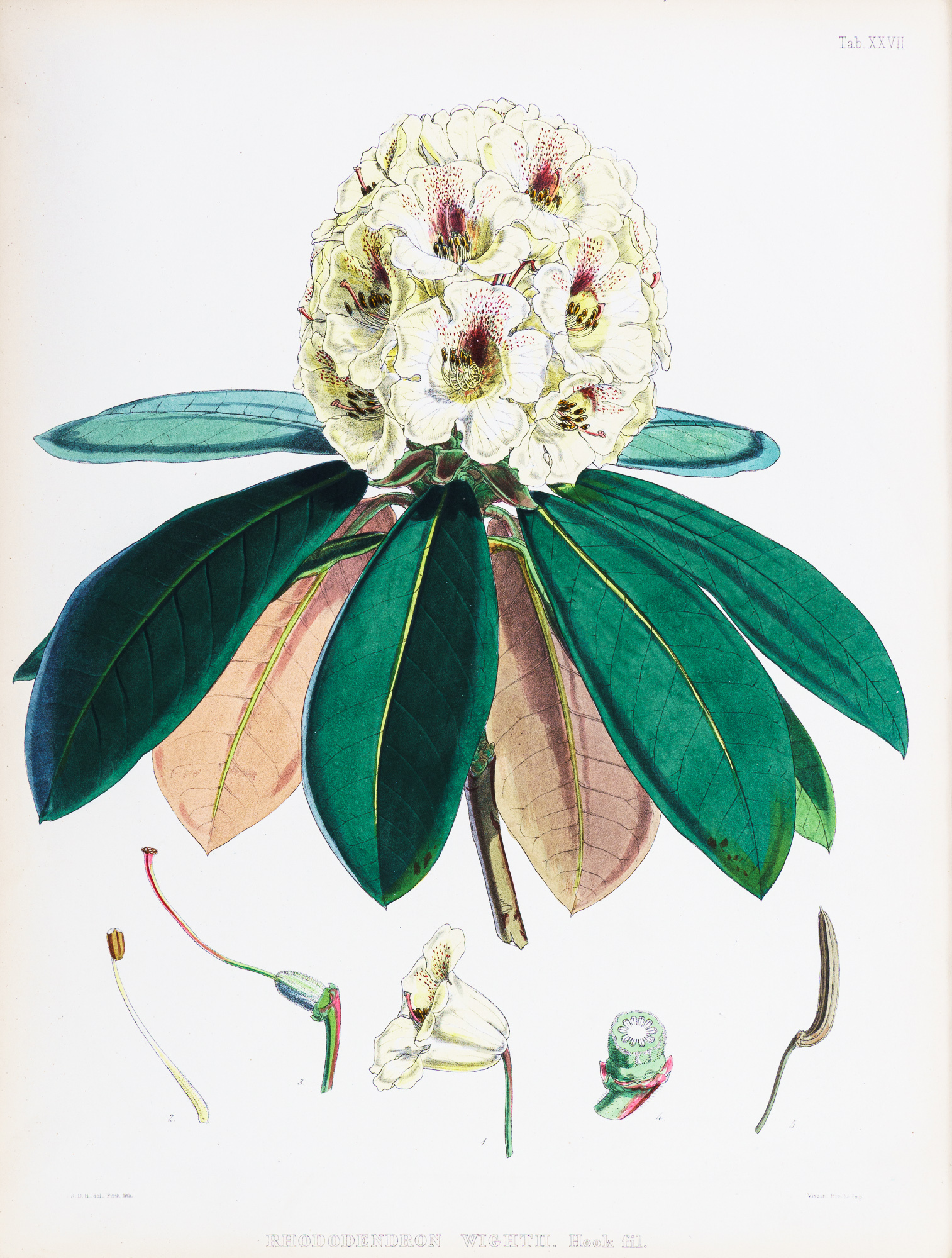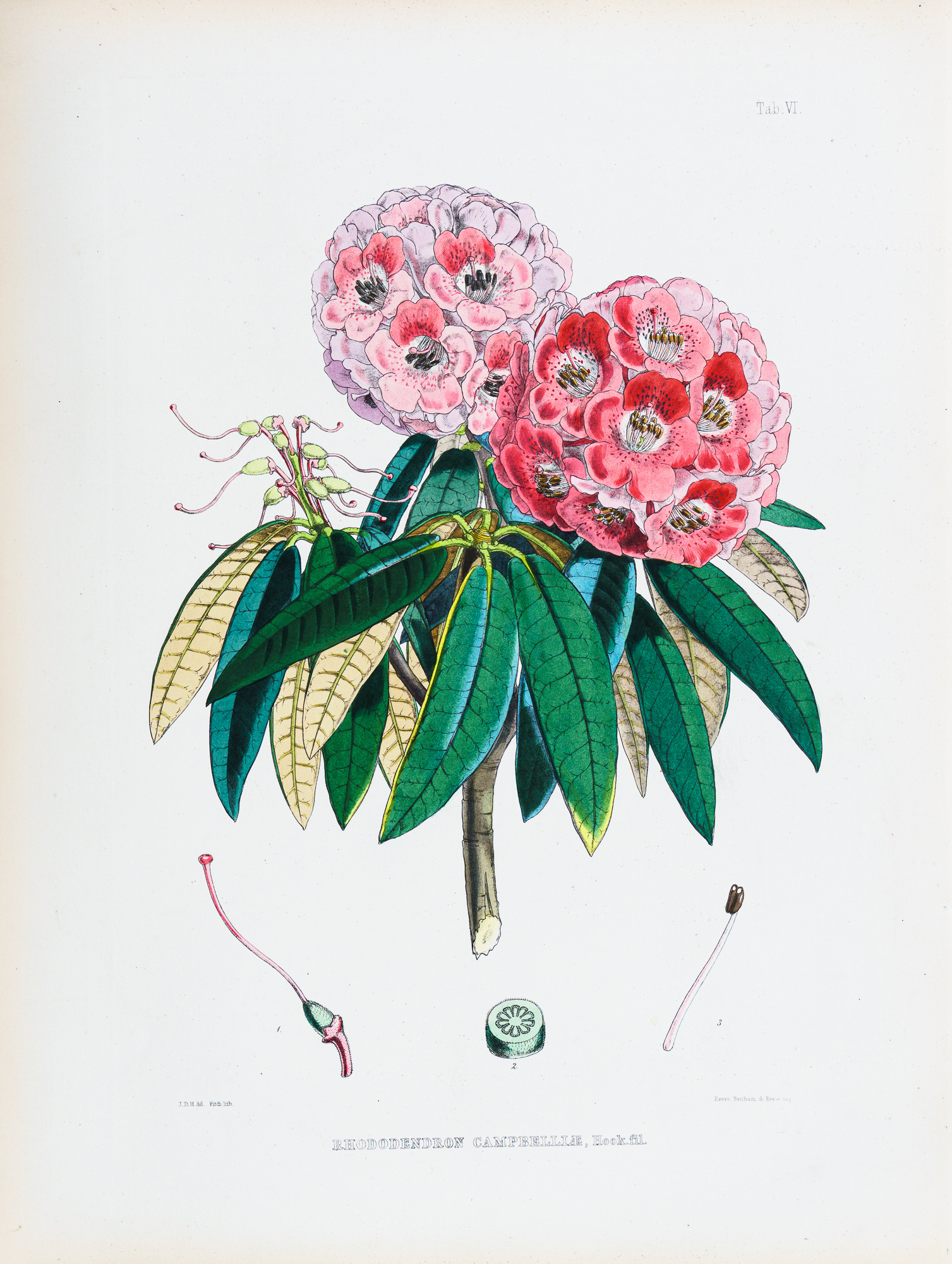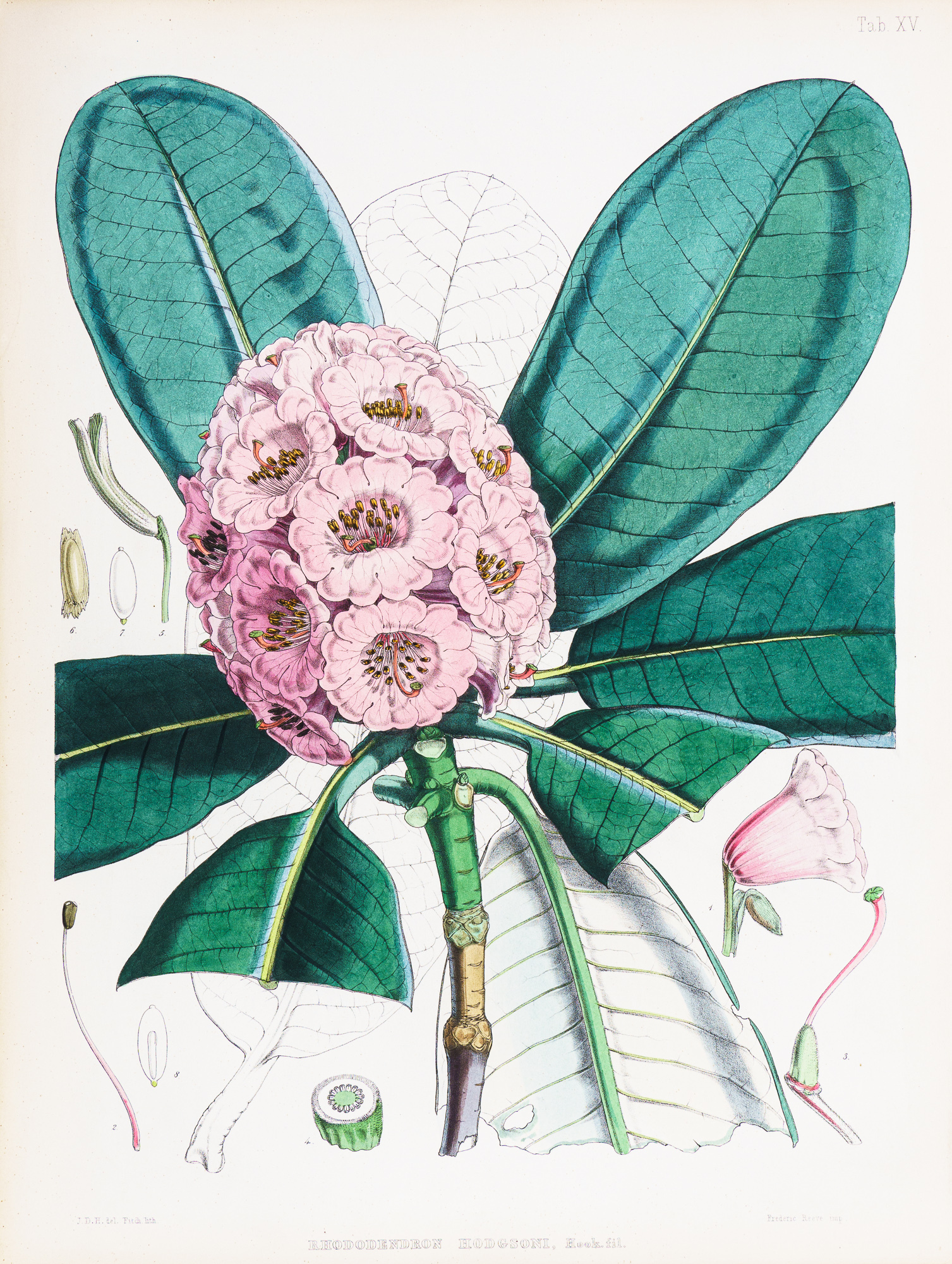
At that time Sikkim was an independent kingdom and is now a state of India. Based in Darjeeling (elevation 7,200 feet) Hooker discovered 25 new rhododendrons on his expedition. While in the field - and "on the spot" as it was commonly known at the time - and under sometimes very trying conditions, he prepared accurate water colour sketches which were sent back to England where his father, Sir W J Hooker, arranged for the leading artist/ lithographer Walter Hood Fitch to prepare the finished plates and for publication. These were issued in parts the first being issued before Joseph returned home. (Sir William Jackson Hooker KH DCL FRS FLS etc. was the first official director of the Royal Botanic Gardens, Kew.)

